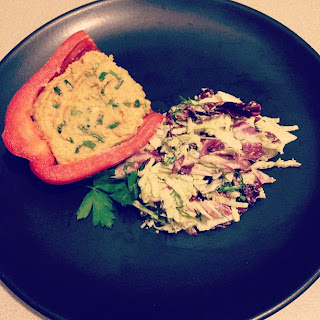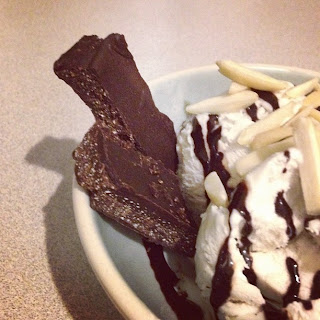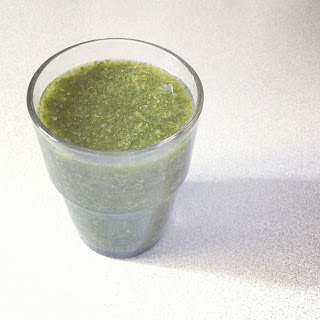Holy crap, is this not a majorly under explained thing in raw food books!? I have definitely learned about opening coconuts the hard way and would love to save you a few steps.
First, the difference between coconuts.
Young Coconuts. Used for their water and SOFT meat.
Most, if not ALL raw recipes call for this kind. The soft meat is great for smoothies, pies, puddings, sauces, dehydrated bacon, etc. The water is sweeter than mature coconuts and used in most coconut water products.

They are immature and therefore green, and have a thick soft skin around them. When you buy them from the store, the green outside is chopped down for you and you have a coconut with a cone top and a square bottom (which is very convenient for placing down on a table).

Mature Coconuts. Used for their water and HARD meat. The meat is shredded and used to make coconut milk or oil, or shredded and dehydrated for coconut flakes.

"Coconut milk, not to be confused with coconut water, is obtained primarily by extracting juice by pressing the grated coconut's white kernel or by passing hot water or milk through grated coconut, which extracts the oil and aromatic compounds. When refrigerated and left to set, coconut cream will rise to the top and separate from the milk. The milk can be used to produce virgin coconut oil by controlled heating and removal of the oil fraction."
(Store bought coconut milk and water are not raw unless specified due to how they are processed.)
I have mistakingly bought mature coconuts in situations when they were the only kind I could find, only to discover that the meat is so hard and difficult to remove, and NOT the right kind for the recipe I was making. They are fine for water of course (although not as sweet as the water from a younger coconut), but the meat was not what I was needing and I eventually threw away the rest of the coconut because I was unable to properly use it.
SO, if you are looking to open a coconut for water or for soft meat, get a YOUNG coconut. And here are some tips on how to open one a little easier. Alas, its still hard to do. I hate when books make it sound super easy, it's not!
You will need either a sharp chefs knife that you don't care much about:

or a SUPER sharp heavy duty cleaver:

First, the best lesson I ever learned (that a lot of books don't tell you), shave off the tip of the coconut! Shave down the top even more, you will feel the hard round cone below but shave off as much as you can. That way you have less to hack through.

Next, there are three ways to get into that fucker. One, straight chop off the whole top with a huge cleaver.
It can be done, I don't know how. I tried, and the only thing I accomplished was pissing off the neighbors below me.

Two, using the heel of the chefs knife:

find one of three ribs on the cone of the shaved coconut. Make a solid crack on the outside edge of one of them. From these three ribs, forms a round stress point, in which a natural round crack forms. So if you can poke through the edge of one of the ribs, you can pry your way aound the stress point, creating a lid to pry open. (AHHHH, WHAT?)

Three, hack slowly in a square formation around the tip until you crack through. This is the only way I've succeeded to get through. Its a slow and steady way, I feel more control of and the hacks aren't as loud. You will slowly crack a lid that can be pried open.

Important: Once you have a little crack, CAREFULLY pour out the water into a container! Don't loose that stuff. Or if you feel confident keeping the coconut steady, you can continue.
Take the tip of the knife, stick it through and pry open the rest of the lid. You can slide your knife side to side too, which can help.
Once, you have poured out the water ,you can hack at the opening a little more and try to make it wider. Then you can scrape out the meat easier.

I like to do this by using the sharpest spoon I have, or even a sharp ice cream scoop, and scoop out the meat from the inside. Sometimes its super easy to do, and sometimes really hard. It all depends on how fresh the coconut is. So try to ask your produce dude how fresh that shit is, cause you might be cursing him later if you don't.
If the meat is harder than usual, you can put the coconut in the microwave for 30 secs or run under hot water, which helps loosen the meat. Either way, with TIME, it all works out.
Typically a young coconut yields 1/2 cup-1 cup meat
A lot of work it can seem like, but it you get the right, perfectly young and fresh coconut, it can actually, sort of, be easy. But either way, be prepared to spend some time on it cause you can't tell by looking at them how fresh they are (as far as I have found).
So as much as its been a pain in the ass to figure this all out, I'm glad I did, because some of my favorite recipes use coconuts.
Such as, one of the best inventions ever, coconut BACON.
Can be made from the coconut meat if you were able to remove it in thicker strips. Then you just marinate it, and dehydrate it!


I used the recipe from
Ani's Raw Food Essentials, pg. 76. I don't wanna non-consensually publish her recipe for free, sorry kids, but here's a
similar recipe that was already published on the web!





















































